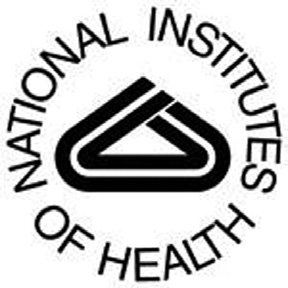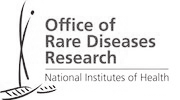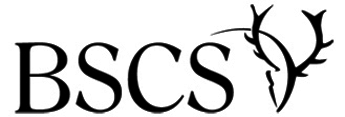



Rare Diseases and
Scientific Inquiry
developed under a contract from the
National Institutes of Health
Office of Rare Diseases Research
5415 Mark Dabling Boulevard
Colorado Springs, Colorado 80918
BSCS Development Team
Jennifer Hackett, The Dalton School, New York, NY
Mark Bloom, Co-Principal Investigator
Donald Low, Mount Sinai Hospital, Toronto, ON
Paul Beardsley, Co-Principal Investigator
Jonathan Martin, National Marfan Foundation,
Brooke Bourdélat-Parks, Curriculum Developer
Port Washington, NY
Anne Westbrook, Curriculum Developer
Rebecca Kruse, Evaluator
Field-Test Teachers
Molly Stuhlsatz, Evaluator
Jean Caccioppoli, Elias Bernstein IS 7, Aberdeen, NJ
Jon Adams, Project Assistant
Nathaniel Franck, Our Lady of Guadalupe,
Annette Plemmons, Production Manager
Seattle, WA
Stacey Luce, Production Coordinator
Rhonda Kass, Goochland Middle School,
Chris Moraine, Production Specialist
Goochland, VA
Allan Miller, Kenai Middle School, Soldotna, AK
BSCS Administrative Staff
Anna Persson, York International, Thornton, CO
Richard Cardullo, University of California, Riverside,
Kathryn Rice, Beaver Lake Middle School, Issaquah, WA
California, Chair, Board of Directors
Mary Rodriguez, Edwards Elementary School,
Janet Carlson, Executive Director
Chicago, IL
Pam Van Scotter, Associate Director
Katherine Smyre, West Cary Middle School, Cary, NC
Jane Suminski, Humboldt Park K–8 School,
National Institutes of Health
Milwaukee, WI
Stephen Groft, Office of Rare Diseases Research
Mark Temons, Muncy Junior/Senior High School,
David Eckstein, Office of Rare Diseases Research
Williamsport, PA
Geraldine Pollen, Office of Rare Diseases Research
Shannon Thomas, Cocopah Middle School,
Bruce Fuchs, Office of Science Education
Scottsdale, AZ
Lisa Strauss, Office of Science Education
David Vannier, Office of Science Education
Reviewers
Cindy Allen, Office of Science Education
Hal Dietz, Victor A. McKusick Professor of Medicine
and Genetics, Johns Hopkins University School of
Red Hill Studios
Medicine, Baltimore, MD
Bob Hone, Creative Director
Steve Holland, Chief of the Laboratory of Clinical
Sharon Hibbert, Senior Producer
Infectious Diseases, National Institute of Allergy and
Wendy Hari, Producer
Infectious Diseases, Bethesda, MD
Brent Tam, Associate Producer
Christian Kratz, Investigator, National Cancer
Steve McEntee, Designer/Art Director
Institute, Bethesda, MD
Charlie Brown, Senior Programmer
Dave Gonzalez, Programmer
This material is based on work supported by the
John Hoffsis, Programmer
National Institutes of Health under Contract No.
HHSN263200800031C. Any opinions, findings,
Advisory Committee
conclusions, or recommendations expressed in this
Sukirti Bagal, National Organization for Rare
publication are those of the authors and do not
Disorders, Danbury, CT
necessarily reflect the view of the funding agency.
Claireen Espinoza, Taos Day School, Taos, NM
Jennifer Hackett, The Dalton School, New York, NY
Copyright © 2011 by BSCS. All rights reserved.
Anna Kong, Stone Academy, Chicago, IL
You have the permission of BSCS to reproduce
Henrietta List, Community Science Network,
items in this supplement for your classroom use.
Hanover, ME
The copyright on this supplement, however, does not
Gregory McDonald, Philadelphia College of
cover reproduction of these items for any other use.
Osteopathic Medicine, Philadelphia, PA
For permission and other rights under this copyright,
Philip Reilly, Independent Consultant, Concord, MA
please contact BSCS, 5415 Mark Dabling Blvd.,
Colorado Springs, CO 80918-3842.
Design Team
Steven Brügge, Eisenhower Middle School,
Please contact the NIH Office of Science
Albuquerque, NM
Education with questions about this
Samuel Davis, Olympia High School, Orlando, FL
Timothy Garrington, University of Colorado–Denver/
supplement at supplements@science.
Children’s Hospital, Aurora, CO
education.nih.gov.
Contents
Foreword ...................................................................................................................................v About the National Institutes of Health ...................................................................................vi About the Office of Rare Diseases Research .............................................................................vi About Biological Sciences Curriculum Study ..........................................................................vii Introduction to Rare Diseases and Scientific Inquiry
1
• What Are the Objectives of the Supplement?
• Why Teach the Supplement?
• What’s in It for the Teacher?
Table 1. Correlation of Rare Diseases and Scientific Inquiry to Middle School Biology Topics Table 2. Correlation of Rare Diseases and Scientific Inquiry to Middle School Scientific Inquiry Topics
Implementing the Supplement
5
• What Are the Goals of the Supplement?
• What Are the Science Concepts and How Are They Connected?
Table 3. Science Content and Conceptual Flow of the Lessons
• How Does the Supplement Correlate to the National Science Education Standards?
Table 4. Alignment of Rare Diseases and Scientific Inquiry Lessons with National Science
Education Standards for Content, Grades 5–8
– Teaching Standards
– Assessment Standards
• How Does the BSCS 5E Instructional Model Promote Active, Collaborative, Inquiry-Based Learning?
Table 5. Understanding the BSCS 5E Instructional Model: What the Teacher Does Table 6. Understanding the BSCS 5E Instructional Model: What the Students Do
– Engage
– Explore
– Explain
– Elaborate
– Evaluate
• What’s the Evidence for the Effectiveness of the BSCS 5E Instructional Model?
Table 7. Differences in Performance of Students Receiving Inquiry-Based and Commonplace Instructional Approaches
• How Does the Supplement Support Ongoing Assessment?
• How Can Controversial Topics Be Handled in the Classroom?
iii
Using the Student Lessons
17
• Format of the Lessons
• Timeline for Teaching the Supplement
Table 8. Suggested Timeline
Using the Web Site
19
• Hardware and Software Requirements
• Collaborative Groups
• Web Materials for People with Disabilities
Information about Rare Diseases and Scientific Inquiry
21
1.0 A History of Rare Diseases in the United States .....................................................................21
2.0 The Impact of Genomics on Rare Diseases ...........................................................................24
3.0 Rare Infectious Diseases .........................................................................................................26
4.0 Rare Diseases Caused by Environmental Toxins ....................................................................27
Table 9. Industrial Chemicals and Their Associated Diseases
5.0 Rare Diseases Featured in This Curriculum Supplement ......................................................28
5.1 Necrotizing Fasciitis ........................................................................................................28
5.2 Marfan Syndrome ............................................................................................................29
Table 10. Features of Marfan Syndrome
Table 11. Disease Management Options for Marfan Syndrome
5.3 Childhood Leukemia.......................................................................................................31
6.0 Rare Diseases as a Topic for the Middle School Science Classroom ......................................33
7.0 Scientific Inquiry ....................................................................................................................34
7.1 Scientific Inquiry as a Topic for the Middle School Classroom ......................................35
7.2 Scientific Inquiry in the National Science Education Standards .......................................35
Table 12. NSES Content Standards for Scientific Inquiry, Grades 5–8
Glossary
37
References
41
Student Lessons
45
Lesson 1—What Is a Rare Disease? ..............................................................................................45
Lesson 2—What Causes Rare Diseases? .......................................................................................53
Lesson 3—The Difficulty of Diagnosis .........................................................................................75
Lesson 4—The Importance of Medical Research ..........................................................................95
Lesson 5—Communicating about Rare Diseases ........................................................................123
Masters
137
iv
Rare Diseases and Scientific Inquiry
Foreword
Rare Diseases and Scientific Inquiry is the most
Each of our curriculum supplements comes
recent addition to the National Institutes of
with a complete set of printed materials for
Health (NIH) Curriculum Supplement Series.
teachers, including extensive background and
This series brings the latest medical science and
resource information, detailed lesson plans,
research discoveries from NIH into the K–12
and masters for student worksheets. The Web
classroom. NIH plays a vital role in the health
site accompanying Rare Diseases and Scientific
of all Americans and seeks to foster interest
Inquiry has interactive materials to support the
in research, science, and medicine-related
lessons. The supplements are distributed for
careers for future generations. The NIH Office
free to educators across the United States upon
of Science Education is dedicated to promoting
request. They may be copied for classroom use
scientific literacy and the knowledge and skills
and educational purposes but may not be sold.
we need to secure a healthy future for all.
We welcome your feedback. For a complete
Rare Diseases and Scientific Inquiry gives
list of curriculum supplements and ordering
students an opportunity to grapple with
information, or to submit feedback, visit
some of the most challenging and engaging
http://science.education.nih.gov or write to
medical issues that confront our society.
Curriculum Supplement Series
We designed Rare Diseases and Scientific
Office of Science Education
Inquiry to complement existing life science
National Institutes of Health
curricula and to be consistent with National
6100 Executive Blvd., Suite 3E01
Science Education Standards. Middle school
Bethesda, MD 20892-7520
science teachers, medical experts, education
or
specialists, scientists, representatives from the
supplements@science.education.nih.gov
NIH Office of Rare Diseases Research (ORDR),
and curriculum-design experts from Biological
We appreciate the valuable contributions from
Sciences Curriculum Study (BSCS) created
the talented staff at BSCS. We are also grateful
the activities. The collaborative development
to the NIH scientists, advisors, and all other
process includes geographically dispersed field
participating professionals for their work and
tests by teachers and students.
dedication. Finally, we thank the teachers and
students who participated in focus groups and
The curriculum supplements enable teachers
field tests to ensure that these supplements are
to facilitate learning and stimulate student
both engaging and effective. I hope you find our
interest by applying scientific concepts to real-
series a valuable addition to your classroom,
life scenarios. Design elements emphasize key
and I wish you a productive school year.
biology concepts and analytic methods, cutting-
edge science content, and built-in assessment
Bruce A. Fuchs, Ph.D.
tools. Activities promote active and collaborative
Director
learning to help students develop problem-
Office of Science Education
solving strategies and critical-thinking skills.
National Institutes of Health
v
About the National Institutes of Health
Founded in 1887, NIH is the federal focal point
basic research and clinical investigators, as
for health research in the United States. Today,
well as the myriad professionals in many allied
it is one of the agencies in the Department
disciplines who support the research enterprise.
of Health and Human Services. Its mission is
These efforts also help educate people about
science in pursuit of fundamental knowledge
scientific results so that they can make informed
about the nature and behavior of living systems
decisions about their own—and the public’s—
and the application of that knowledge to extend
health.
healthy life and reduce the burdens of illness
and disability. NIH works toward meeting the
This curriculum supplement is one such
mission by providing leadership, direction, and
education effort. It is a collaboration among the
grant support to programs designed to improve
Office of Rare Diseases Research, the NIH Office
the health of the nation through research.
of Science Education, and Biological Sciences
Curriculum Study.
NIH’s education programs contribute to
ensuring the continued supply of well-trained
For more about NIH, visit http://www.nih.gov .
About the Office of Rare Diseases Research
The Office of Rare Diseases (ORD) was
States and several foreign countries working
established in 1993 at the National Institutes
on about 100 different rare diseases, and is
of Health. Later, the ORD’s focus on research
working to harmonize community efforts on
prompted a name change to the Office of Rare
patient registries and biospecimen repositories.
Diseases Research (ORDR). The ORDR provides
A rare disease (also called an “orphan disease”)
information on rare diseases and rare disease
is a condition affecting fewer than 200,000
research; supports scientific conferences;
people in the United States (about 1 in 1,500)
cosponsors, with the National Human Genome
or one affecting more people but “for which
Research Institute, the Genetic and Rare
no reasonable expectation exists that the costs
Diseases Information Center; and coordinates
of developing or distributing a drug can be
and supports research on the diagnosis and
recovered from the sale of the drug in the
treatment of rare diseases both intramurally and
United States” (Orphan Drug Act of 1983).
extramurally. The Office also funds the Rare
Diseases Clinical Research Network (RDCRN),
For more about the ORDR, visit
a group of clinical research sites in the United
http://rarediseases.info.nih.gov.
vi
Rare Diseases and Scientific Inquiry
About Biological Sciences Curriculum Study
Headquartered in Colorado Springs, Colorado,
Instructional Model and inquiry are hallmarks
BSCS was founded in 1958 as a curriculum
of its materials, placing students at the center of
study committed to an evidence- and inquiry-
their learning.
based approach to science education. BSCS
instructional materials and professional
The BSCS mission is to transform science
development services are based on current
teaching and learning through research
research about teaching and learning for all
and development that strengthens learning
science classrooms, kindergarten through
environments and inspires a global community
college.
of scientifically literate citizens. BSCS is a
501(c)(3) nonprofit organization.
BSCS’s materials are extensively field-tested
in diverse settings across the country and
For more information, please visit
evaluated for proven effectiveness. The BSCS 5E
http://www.bscs.org.
vii
Introduction to Rare Diseases
and Scientific Inquiry
Calling a disease “rare” raises questions. What
2. the process of scientific inquiry through
does it mean to say that a disease is rare? Why
studying rare diseases.
should rare diseases be singled out for special
attention? In the United States, a disease is
The lessons in this supplement help students
considered rare if it affects fewer than 200,000
sharpen their skills in observation, critical
people. Approximately 7,000 rare diseases are
thinking, experimental design, and data
recognized, and researchers continue to describe
analysis. They also make connections to other
new ones. Taken together, rare diseases represent
disciplines such as English, mathematics, and
a significant health concern affecting over
social science.
25 million Americans. Like more-common
diseases, rare diseases may be caused by gene
As the supplement achieves its objectives,
mutations, infection from pathogens, and exposure
it helps convey to students the purpose of
to harmful substances in the environment.
scientific research. Students experience how
science provides evidence that can be used to
Because rare diseases affect fewer people than
understand and treat human disease. Ongoing
common diseases do, they have traditionally
research affects how we understand the world
been allocated fewer research resources. This
around us and gives us the foundation for
has made it more difficult for people with rare
improving choices about our personal health
diseases to obtain accurate diagnoses of their
and the health of our community.
conditions. Even with an accurate diagnosis,
patients may find that there are no existing
The lessons in this supplement encourage
medications or other treatments to help them.
students to think about the relationships among
People with rare diseases may feel isolated and
knowledge, choice, behavior, and human health
even stigmatized. Fortunately, during the past
in this way:
25 years, increased attention has been devoted
Knowledge (what is known and not known)
to the study of rare diseases, and new treatments
+ Choice = Power
are being developed to help patients.
Power + Behavior = Enhanced Human Health
What Are the Objectives of the
Supplement?
The final objective of this supplement is to
Rare Diseases and Scientific Inquiry has two
encourage students to think in terms of these
main objectives: to help students in grades 6–8
relationships now and as they grow older.
understand
1. that studying rare diseases is not only
Why Teach the Supplement?
important to the people affected by
Middle school life science classes offer an
the diseases, but it also contributes to
ideal setting for integrating many areas of
understandings that researchers can apply
student interest. In this supplement, students
to other, more-common diseases or, more
participate in activities that integrate inquiry,
generally, to how the body works and
science, human health, mathematics, and
1
science-technology-society relationships. The
(National Research Council (NRC), 1996). It
real-life context of the supplement’s classroom
pays particular attention to the standards on
lessons is engaging for students, and they can
scientific inquiry.
immediately apply what they learn to their lives.
• It is integrated with other subjects, drawing
most heavily from science, social science,
What’s in It for the Teacher?
mathematics, and health.
Rare Diseases and Scientific Inquiry meets many
• It has a Web-based technology component that
of the needs of teachers in modern classrooms:
includes interactive activities and simulations.
• The supplement meets science content,
• Finally, the supplement includes built-in
teaching, and assessment stand







